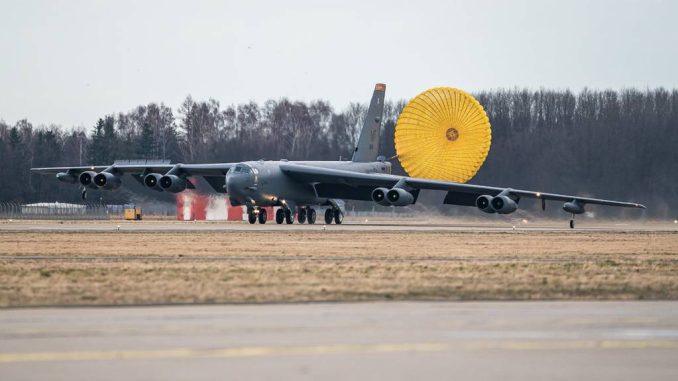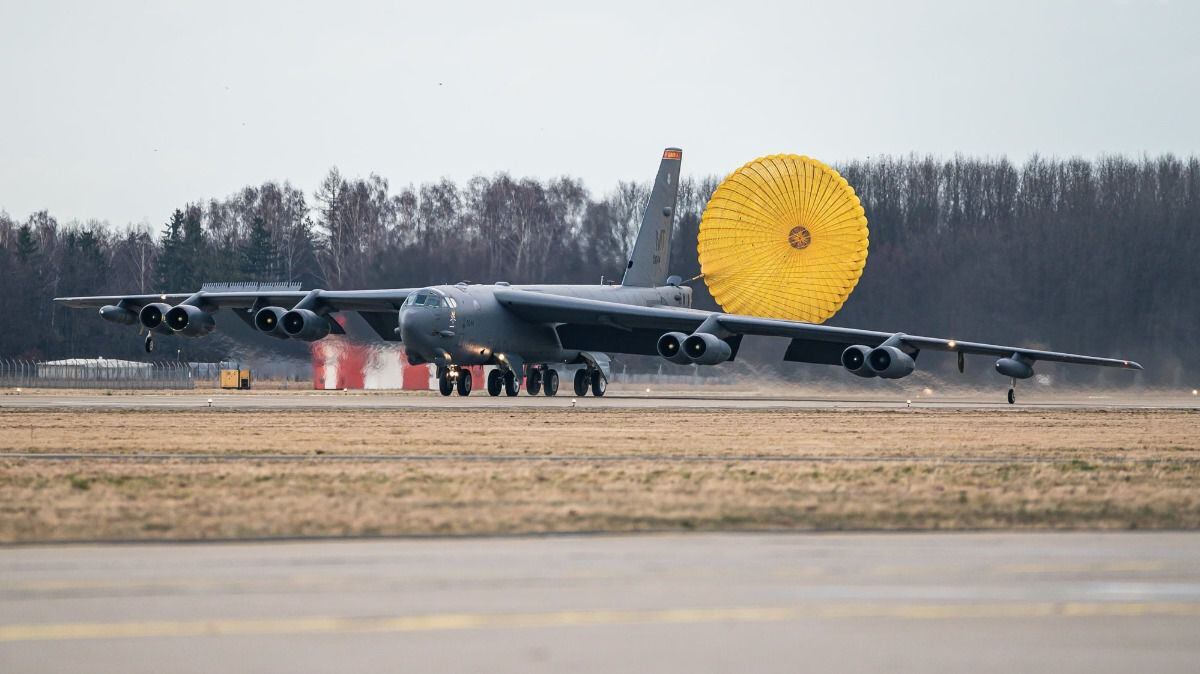

Air Force B-52 Stratofortress jets participated in a NATO Allied Air Command bomber task force mission alongside fighter aircraft from the Czech Republic this week, conducting bilateral and theater familiarization operations.
The B-52′s landed in the Czech Republic Feb. 21, practicing quick-turn sortie generation, a maneuver in which pilots and air crew shut off aircraft engines, repack parachutes and refuel for quick-mission turn around capabilities.
Czech fighters flew alongside the U.S. bombers, escorting the aircraft and participating in other maneuvers supporting allied and partner interoperability and training objectives.
According to the NATO Allied Air Command press release announcing the mission, conducting these pre-flight maneuvers from different locations allows NATO crews and aircraft to launch from a diverse array of allied airfields, extending the Alliance’s range of operations.
“Operations like these truly enhance our interoperability with our Allies and partners,” commander of U.S. Air Forces in Europe, Gen. Jeff Harrigian, said in the press release.
“We’re baking-in the necessary skills so it increases our combined capabilities and readiness while allowing flexible and agile options for Allied bombers to respond to any changes in the operational environment.”
U.S. forces have been participating in a number of NATO air missions as the conflict between Ukraine and Russia steadily escalates, ranging from air policing missions in Estonia and Poland to American spy planes, including RQ-4 Global Hawk drones and RC-135V/W Rivet Joints, routinely patrolling the regional airspace for the last few weeks.
Additional U.S. B-52 bombers arrived at England’s RAF Fairford Feb. 10 for a previously planned European rotation, as aircraft continue to jump around the region. American fighter jets stationed elsewhere on the continent have also moved farther east, including squadrons from Spangdahlem Air Base in Germany and RAF Lakenheath in England.
In a Jan. 14 op-ed for the Washington Post, Wesley Clark — the retired four-star Army general who served as NATO’s supreme allied commander from 1997 to 2000 — suggested that U.S. and NATO air forces even needed to further increase their reactions to the conflict.
Clark recommended dispatching NATO air assets to Romania, Bulgaria and Poland as a precaution, in addition to Eurofighters and foreign F-15 and F-16 fighter jet models already policing NATO airspace. — ideally to deter Russian military planes. He added that further air power would “reassure these allies and contain any spillover of Russian military action” that may spillover into NATO territory.
“The time for this is now, before any action begins, rather than rushing forward in the face of Russian action, when the risks of accidental hostile encounters would be much higher,” he said.
Clark’s warning may now serve as a direct call to action, however, as Russian troops, referred to by Russian President Vladimir Putin as “peacekeepers,” have since entered separatist regions of eastern Ukraine following the Kremlin’s recognition of the areas as independent, despite international condemnation for the move.
Rachel is a Marine Corps veteran, Penn State alumna and Master’s candidate at New York University for Business and Economic Reporting.



Be the first to comment